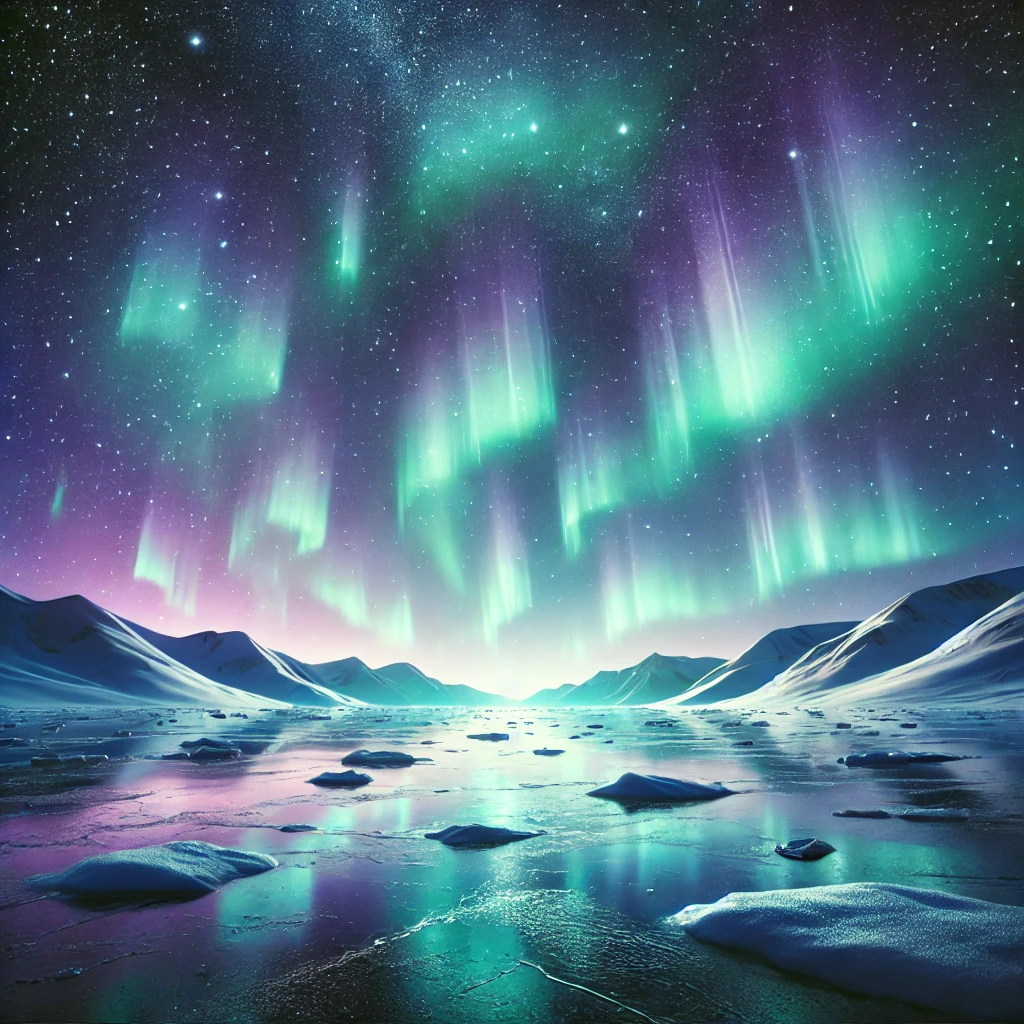Greetings, cosmic explorers! Captain Nova here, reporting from the Odyssey Explorer on Day 43 of our 100 Days of Space Exploration journey. Today, we set our sights on one of Earth’s most mesmerizing natural phenomena—the Aurora Borealis, or as it’s more commonly known, the Northern Lights. These dancing ribbons of color illuminate the polar skies with ethereal beauty, captivating skywatchers and scientists alike. But what causes this breathtaking spectacle? Let’s embark on an interstellar deep dive to uncover the science behind the auroras, their history, and their significance to our understanding of space.

What Causes the Aurora Borealis?
To understand the Northern Lights, we must first venture to the heart of our Solar System—the Sun. The Sun is a massive ball of plasma, constantly emitting streams of charged particles known as the solar wind. This solar wind races through space at speeds of up to 800 km/s (500 miles per second), carrying with it a mix of electrons and protons.
As this charged solar wind reaches Earth, it encounters our planet’s magnetosphere—a protective shield generated by Earth’s magnetic field. The magnetosphere deflects most of these solar particles, but some manage to sneak in near the polar regions, where Earth’s magnetic field lines funnel them toward the atmosphere.
When these charged particles collide with atoms and molecules in Earth’s upper atmosphere (primarily oxygen and nitrogen), they excite these atmospheric gases, causing them to emit light—much like neon signs. The result? A spectacular, colorful display we call the Aurora Borealis.
The Science Behind the Colors
The color of the aurora depends on the type of gas particles involved and the altitude at which the collisions occur:
- Green (most common): Produced by oxygen molecules around 100-300 km (60-190 miles) above Earth’s surface.
- Red: Also caused by oxygen, but at much higher altitudes (above 300 km), where lower oxygen density results in rarer red hues.
- Purple and Blue: Generated by nitrogen molecules at lower altitudes (below 100 km).
- Pink and Yellow: Often a mix of nitrogen and oxygen emissions.
This stunning palette of colors makes the auroras one of the most visually striking natural phenomena known to humankind.
Where and When Can You See the Northern Lights?
The best places to witness the Aurora Borealis are within the Auroral Oval, a ring-shaped region encircling Earth’s geomagnetic poles. The most optimal locations include:
- Norway (Tromsø, Svalbard)
- Sweden (Abisko National Park)
- Finland (Lapland region)
- Canada (Yukon, Northwest Territories)
- Iceland
- Greenland
- Alaska, USA
The best time to see auroras is during winter months when the nights are longest—typically from September to March. The lights are most active during periods of heightened solar activity, especially around the solar maximum, a peak in the Sun’s 11-year cycle of activity.
The Aurora Australis: The Southern Lights
While the Northern Lights are well-known, their lesser-discussed counterpart, the Aurora Australis (Southern Lights), is just as magnificent. These auroras occur in the Southern Hemisphere, visible primarily from Antarctica, New Zealand, and southern Australia. The mechanism behind the Aurora Australis is identical to that of the Aurora Borealis, but it is less frequently observed due to the remote locations of prime viewing spots.
Auroras Beyond Earth
Earth isn’t the only planet that experiences auroras! Other planets with magnetic fields and atmospheres also exhibit these luminous displays:
- Jupiter: Its auroras are fueled by its intense magnetic field and interactions with its volcanic moon, Io.
- Saturn: Displays stunning ultraviolet auroras caused by its powerful magnetosphere.
- Mars: Though it lacks a global magnetic field, localized auroras have been detected in regions with residual magnetism.
- Uranus & Neptune: These ice giants also experience auroras, but they are less understood due to their extreme distances.
Studying auroras across the Solar System helps scientists understand planetary magnetospheres and atmospheric compositions.
Cultural and Historical Significance
Throughout history, the Northern Lights have inspired countless myths, legends, and superstitions across different cultures:
- Norse Mythology: The auroras were believed to be reflections from the shields of the Valkyries, warrior maidens guiding fallen heroes to Valhalla.
- Inuit Beliefs: Some Inuit tribes believed the lights were spirits playing in the sky, while others thought they were omens of war.
- Chinese Legends: Ancient Chinese records describe the auroras as celestial dragons battling in the sky.
- Greek & Roman Accounts: The term “aurora” comes from the Roman goddess of dawn, Aurora, who was believed to race across the sky, bringing light to the morning.
Even today, auroras continue to evoke wonder and scientific curiosity, reminding us of our deep connection to the cosmos.
How Auroras Impact Modern Science and Technology
Beyond their beauty, auroras also play a significant role in space weather studies. Intense auroral activity often signals geomagnetic storms, which can impact satellite communications, GPS systems, and even power grids on Earth.
For instance, the Carrington Event of 1859 was a massive geomagnetic storm that caused auroras visible as far south as the Caribbean. It also disrupted early telegraph systems, showcasing the potential impact of solar storms on human technology.
Today, space agencies like NASA and ESA monitor auroral activity to predict space weather events and protect our growing network of satellites and power infrastructures.
Final Thoughts
The Aurora Borealis is a magnificent reminder of our Sun’s power and Earth’s intricate defenses against the harshness of space. It stands as both a natural wonder and a gateway to understanding the complex interactions between solar activity and planetary magnetic fields.
If you ever get the chance to witness the Northern Lights in person, take a moment to marvel at the cosmic dance of charged particles and atmospheric gases—a celestial masterpiece, painted in light.
Until tomorrow, fellow explorers, keep looking up, stay curious, and never stop reaching for the stars!
Captain Nova
Odyssey Explorer
Leave a Reply